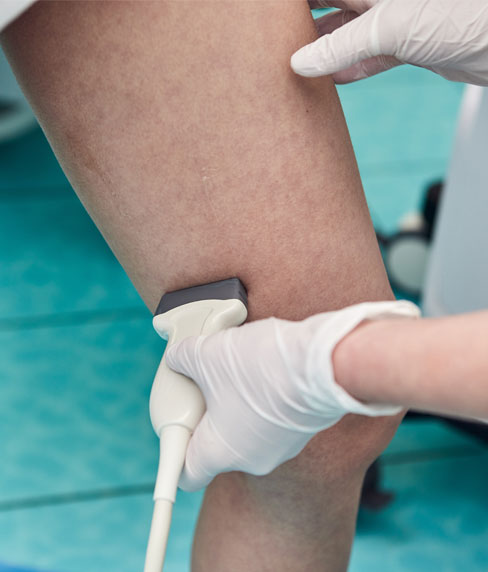Peripheral artery disease is caused by a buildup of plaque in the peripheral arteries and can be uncomfortable, painful, and medically dangerous. Heart of Dixie Cardiology specializes in performing peripheral artery intervention to get you back to full health as soon as possible.
Peripheral artery intervention uses catheters to restore circulation and blood flow to the legs, arms, and other areas of the body. Similar to catheterization of heart disease, peripheral artery catheterization uses dye to image the arteries to find the blockage. Often, these blockages can be repaired by removing plaque, removing blood clots, and ballooning open and placing stents.
These interventions clear blocked arteries, eliminating pain and numbness and restoring blood flow beyond the blockage. This can frequently help wounds to heal by improving blood flow to the area. If peripheral artery disease goes untreated, it can lead to permanent damage and the need for amputation.

Peripheral artery interventions are minimally invasive outpatient procedures that don’t require a hospital stay. Patients should fast from food and water the night before the procedure and inform their cardiologist of all medications and supplements they are taking. Before the procedure begins, you’ll receive local anesthesia at the catheter incision site, usually in the upper groin, as well as a small amount of mild sedative to keep you awake but relaxed.
Your doctor will make a small cut at the incision site and insert a long, narrow tube called a catheter, which can be guided to the affected artery via a live x-ray feed. Once we’ve performed imaging to diagnose a problem and identify the affected area, we can employ several different types of intervention to restore blood flow in the peripheral arteries.
One common intervention is peripheral angioplasty. For this procedure, a small balloon is inserted at the end of the catheter. This balloon can be inflated to compress plaque against the sides of the artery, creating more room for blood to flow.
Another option is a peripheral atherectomy, which is where a small drill or blade is attached to the end of the catheter. These tools break up the plaque, which is carried away by the bloodstream, and the vessel is cleared.
A third type of intervention is called an arterial thrombectomy. In this procedure, a blood clot is removed from an artery via a special type of catheter that sucks the clot out.
With any of these interventions, a mesh metal coil or tube called a stent is frequently placed in the artery to prevent blockage from forming in the artery again.
Following the procedure, you will have to lay flat to allow the catheter access site to heal and to prevent bleeding. You will be observed for a few hours after the procedure. Typically, you will be able to go home the same day as the procedure but will need somebody to drive you home. It is common to have minor bruising at the access site. Refrain from exerting yourself for about seven days. Walking is often beneficial, however.
Since 1997, Heart of Dixie Cardiology has provided residents of southern Utah and eastern Nevada with the best possible cardiovascular care. From prevention to diagnosis to treatment, our heart professionals provide high-quality, compassionate care across our locations in St. George, Mesquite, Cedar City, and Kanab. Contact us today to learn more information or schedule an appointment.
Heart of Dixie Cardiology is a specialty subset of the Revere Health group. We have over a dozen cardiology providers throughout our locations to give you the specialized heart care that you deserve.


2021. All Rights Reserved